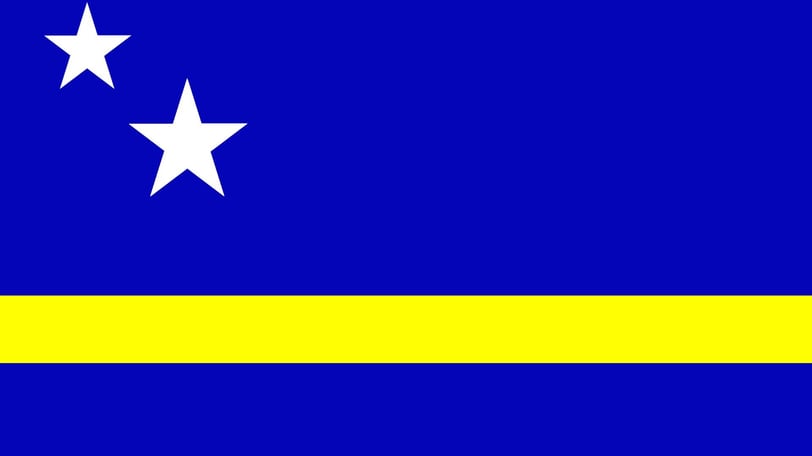Please be aware that this article may contain links to products and services we recommend. If you click on any of these links, we may earn a commission at no extra cost to you. We only endorse products and services that we believe will add value to our readers. Learn more here.
Curaçao Flag: History & Symbolism
Hack The Quiz
8/7/20243 min read
This article explores the history and symbolism of the Curaçao flag, highlighting the island's location in the Caribbean and explaining how the flag’s design represents the culture, natural beauty, and aspirations of the people of Curaçao.
Where is Curaçao?
Curaçao is a Caribbean island located off the coast of Venezuela. It is part of the Dutch Caribbean, which also includes Aruba and Bonaire, collectively known as the ABC Islands. Curaçao is known for its stunning beaches, colorful capital city of Willemstad, and its rich cultural diversity. It is a constituent country of the Kingdom of the Netherlands, which gives it a high level of autonomy while still maintaining ties to the Dutch government.
Curaçao gained its separate status as an autonomous country within the Kingdom of the Netherlands on October 10, 2010. The national flag, adopted in 1984, symbolizes the island’s rich history, cultural identity, and its relationship with the sea.
The History of the Curaçao Flag
The flag of Curaçao was officially adopted on July 2, 1984. The design was chosen to represent the unique cultural heritage and the natural beauty of Curaçao, along with the aspirations of the island’s people for unity and progress.
The flag is a reflection of Curaçao’s deep connection to the sea, the warmth of its people, and the hope for a prosperous future. Since its adoption, the flag has become a cherished symbol of the island’s identity, flown proudly during national celebrations and other important events.
Breaking Down the Curaçao Flag’s Design
The flag of Curaçao features a blue background divided by a horizontal yellow stripe, with two white stars in the top left corner. Each part of the flag carries significant meaning tied to Curaçao’s geography, culture, and national aspirations.
Let’s break down the elements of the flag:
The Blue Background
The blue field represents the Caribbean Sea and the sky, reflecting Curaçao’s natural surroundings. The two shades of blue—light blue above and dark blue below—symbolize the sea and sky, both of which play a central role in the lives of the people of Curaçao. The blue also represents peace and the island’s connection to its maritime heritage.
The Yellow Stripes
The yellow stripe in the middle of the flag represents the sunshine that warms the island, as well as the warmth and friendliness of the people of Curaçao. Yellow also symbolizes prosperity and the hope for a bright future for the island’s residents.
The Two White Stars
The two white stars in the top left corner of the flag represent Curaçao and the smaller, uninhabited island of Klein Curaçao. The five points of each star symbolize the five continents from which the people of Curaçao originate, highlighting the island’s cultural diversity. The stars also represent unity, hope, and guidance for the people of Curaçao.
Final Thoughts
The flag of Curaçao is a vibrant symbol of the island’s culture, natural beauty, and aspirations. The blue field reflects the surrounding Caribbean Sea and the vast sky, while the yellow stripe symbolizes sunshine, warmth, and prosperity. The two stars represent Curaçao and its smaller sister island, as well as the diverse heritage of its people, who have roots in many parts of the world.
Since its adoption in 1984, the flag has been a source of pride and identity for the people of Curaçao, flown during important celebrations and national holidays. It stands as a reminder of the island's heritage, its bright and sunny climate, and the unity that defines its diverse community.
Expand your mind ...
Explore trivia that broadens your understanding and knowledge of the world.
WE ARE HERE FOR YOU
JOIN US and hack the quiz
info@hackthequiz.com
© 2024. All rights reserved.




